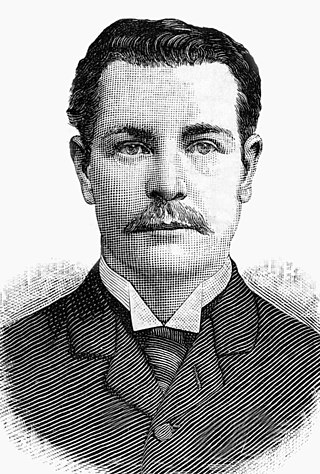
John Worrall was an Australian rules footballer who played for the Fitzroy Football Club in the VFA, and a Test cricketer. He was also a prominent coach in both sports and a journalist.

The punt kick is a common style of kicking in Australian rules football. It is a kick where the ball is dropped from the players' hands and kicked slightly off the longer centre line of the ball before it hits the ground. It is the primary means of kicking the ball in Australian football and is similar to punts used tactically in other football codes, such as American and Canadian football.
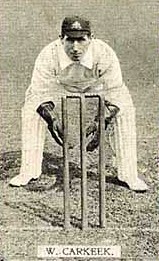
William "Barlow" Carkeek was an Australian sportsman who played Test cricket for Australia and first-class cricket for Victoria, as well as playing Australian rules football in the Victorian Football League (VFL) for Essendon.

Albert John Thurgood was an Australian rules footballer in the Victorian Football Association (VFA), Victorian Football League (VFL) and the Western Australian Football Association (WAFA).
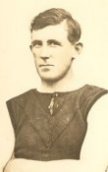
David John McNamara or M'Namara was an Australian rules footballer in the Victorian Football League (VFL).

Jack Moriarty was an Australian rules footballer and champion goal-kicker in the Victorian Football League (VFL).
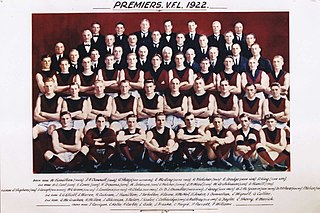
The 1922 VFL season was the 26th season of the Victorian Football League (VFL), the highest level senior Australian rules football competition in Victoria. The season featured nine clubs, ran from 6 May until 14 October, and comprised a 16-game home-and-away season followed by a finals series featuring the top four clubs.

The 1924 VFL season was the 28th season of the Victorian Football League (VFL), the highest level senior Australian rules football competition in Victoria. The season featured nine clubs, ran from 26 April until 27 September, and comprised a 16-game home-and-away season followed by a finals series featuring the top four clubs.
The 1941 VFL season was the 45th season of the Victorian Football League (VFL), the highest level senior Australian rules football competition in Victoria. The season featured twelve clubs, ran from 26 April until 27 September, and comprised an 18-game home-and-away season followed by a finals series featuring the top four clubs.
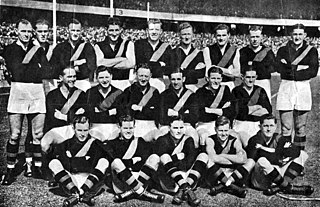
The 1946 VFL season was the 50th season of the Victorian Football League (VFL), the highest level senior Australian rules football competition in Victoria.
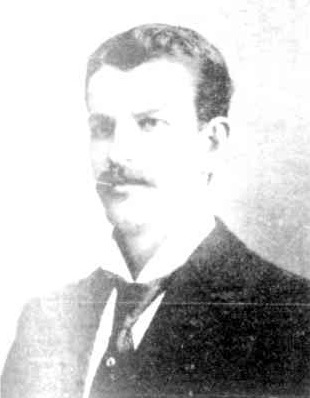
Michael John Grace was an Australian rules footballer who played for the Fitzroy Football Club, Carlton Football Club and St Kilda Football Club in the Victorian Football League (VFL).
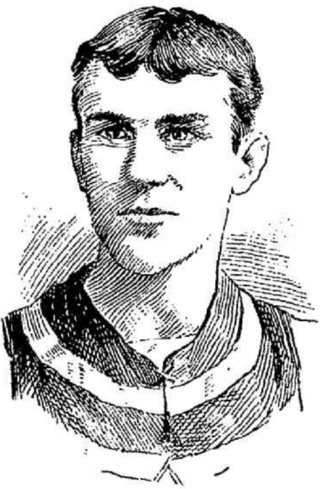
Joseph Francis McShane was an Australian rules footballer in the Victorian Football League (VFL).
Francis William Maher was a decorated Australian soldier who served in the First AIF, and was an Australian footballer and coach in the Victorian Football League (VFL) and the Victorian Football Association (VFA).

Francis Gregory Stockdale was an Australian rules footballer who played with Essendon in the Victorian Football League (VFL) during the 1920s.

John Joseph "Dookie" McKenzie was an Australian rules footballer who played with Essendon and Melbourne in the Victorian Football League (VFL).
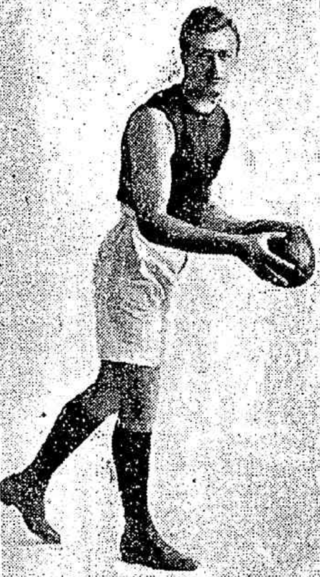
Gordon Kitchener Rattray was an Australian rules footballer who played with and coached Fitzroy in the Victorian Football League (VFL). He was the first VFL player to use the torpedo punt.
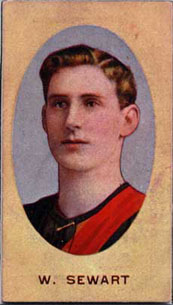
William Isaac Sewart was an Australian rules footballer who played with Essendon in the Victorian Football League (VFL). He was also a first-class cricketer, representing both Queensland and Victoria.

Thomas Frederick O'Shea was an Australian rules footballer who played for Essendon in the Victorian Football League (VFL).

Frederick Henry "Harry" Harker was an Australian rules footballer who originally played for the Brunswick Football Club in the Victorian Football Association (VFA) and then played for the Melbourne Football Club in the Victorian Football League (VFL).
The AFL Australian Football League is the top professional Australian rules football league in the world. The league consists of eighteen teams: nine based in the city of Melbourne, one from regional Victoria, and eight based in other Australian states. The reason for this unbalanced geographic distribution lies in the history of the league, which was based solely within Victoria from the time it was established in 1897, until the time the league expanded through the addition of clubs from interstate to the existing teams starting in the 1980s; until this expansion, the league was known as the VFL (Victorian Football League).

















